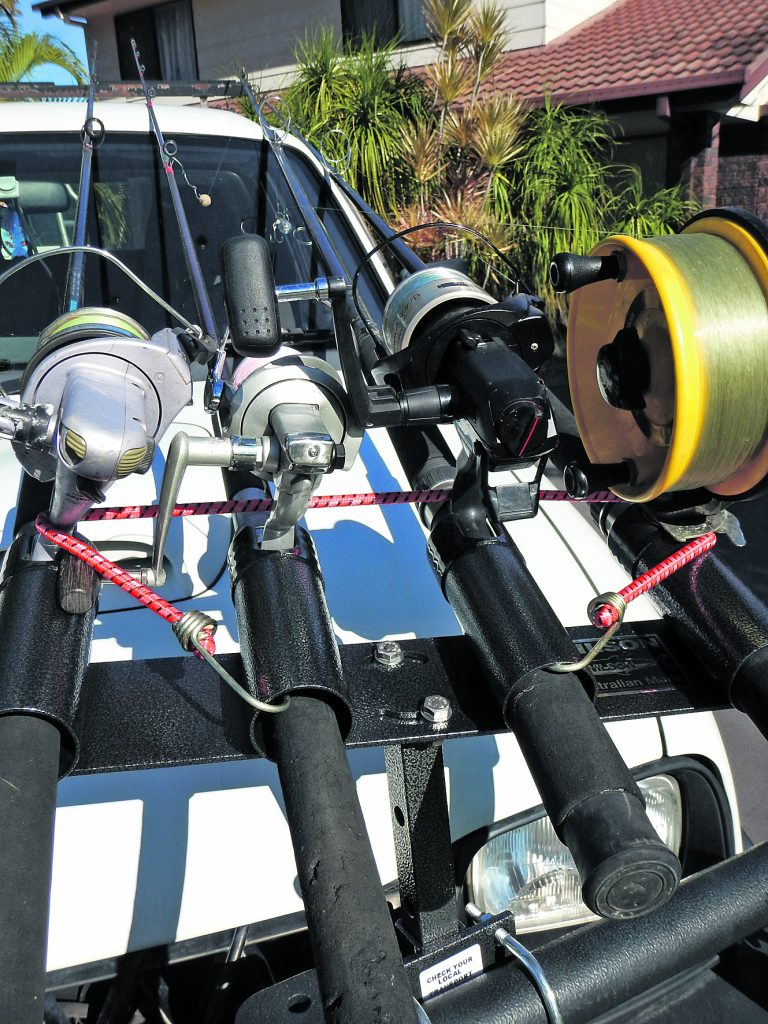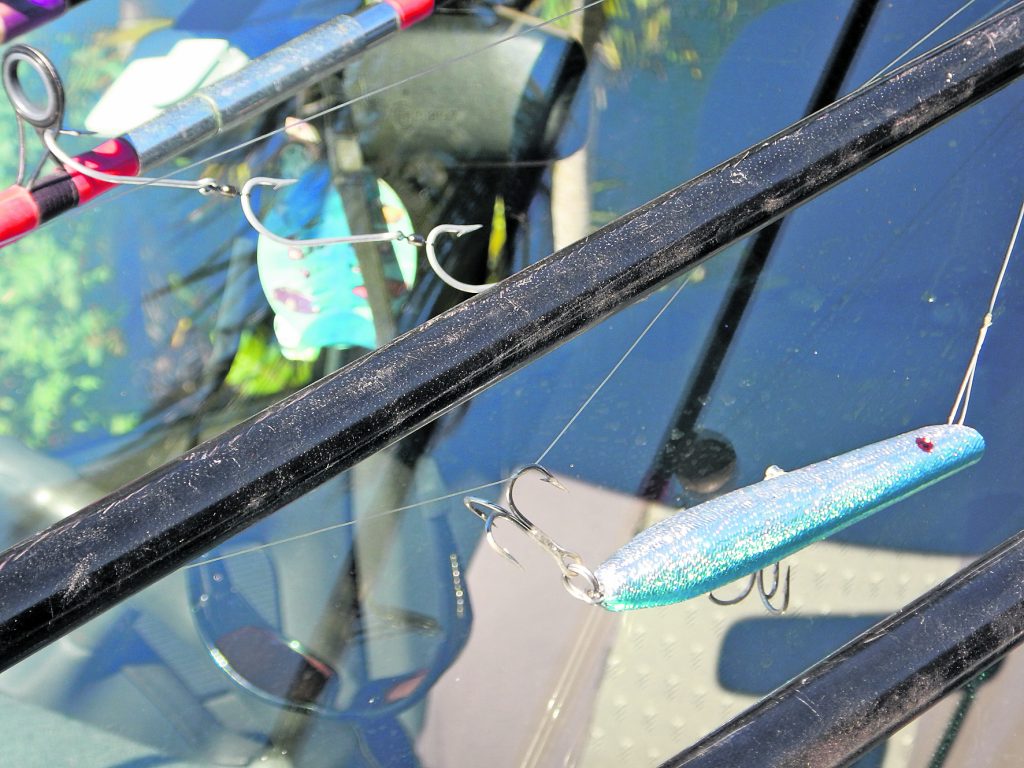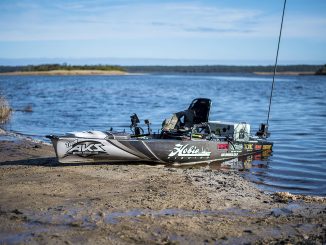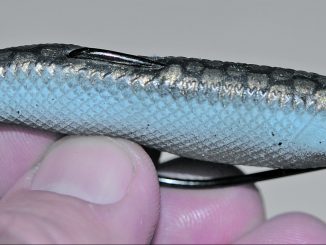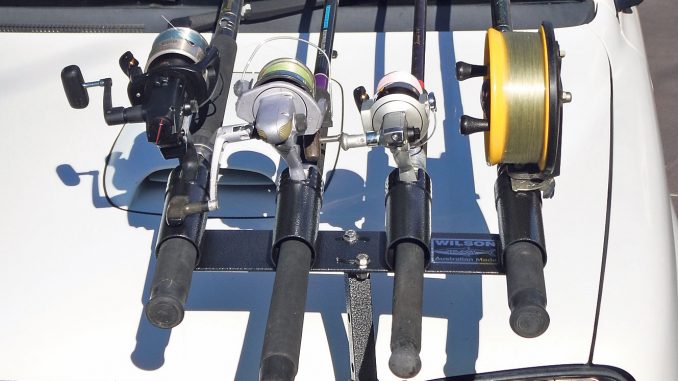
by Gordon Macdonald •
During the latter part of winter and early spring, many anglers make the exodus to Fraser, Stradbroke or Moreton islands or further south to target tailor, mulloway and other beach and rock dwelling species.
Transporting your rods safely, especially those long single-piece models, has always been difficult. Decades ago the bulbar rod holder was invented to transport long rods. This made it much easier for anglers with four wheel drive vehicles sporting bullbars to carry their rods to the fishing areas and along the beach in safety.
It is only a matter of time before law enforcement start another blitz on bullbar rod holder legalities. Ensuring that yours is legal will save you the hassle of being pulled over and possibly copping a huge fine.
If someone became injured as a result of your bullbar rod holder being illegal, then you could be in all sorts of strife. We all want to get to our fishing spots with minimal hassle and have our rods in good condition when we get there, so take the time to sort out your rod transit issues now so you are ready to head out for that next trip at a minutes notice.
ROD HOLDER LEGALITIES
Fishing rod holders can only be fitted providing they comply with the following conditions:
- The fitting allows the driver a view of the road and of traffic to the front and sides of vehicle.
- They must only be attached to the left hand side of the vehicle.
- They must be designed to carry no more than four fishing rods.
- Rods, hooks and sinkers must be properly secured.
- Vehicle lighting must not be obstructed by rods or holders.
- Rod holders must be either removed or retracted behind the profile of the bull bar when they are not in use.
For further information on this and other additions to your vehicle including bike carriers, spotlights and aerials check out www.tmr.qld.gov.au
Bullbars used to be fairly flat across the front and anglers would simply put one or two rod holders onto their bullbar and they were set to go. Bullbars are now more stylish ND shaped to wrap around the front profile of vehicle. Commonly they are only square in relation to the length of the car in the middle, then wrap backwards on the angle of the bumper on both sides.
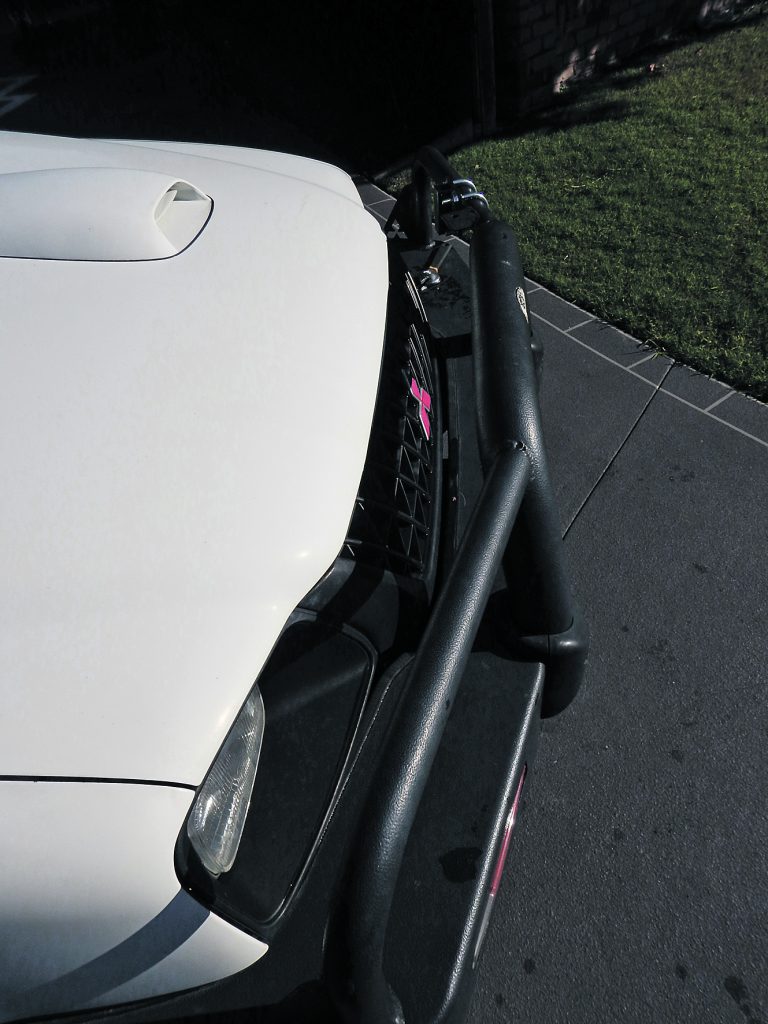
NOT LEGAL: As a result, many have chosen to position their bulbar rod holders in the middle of the bulbar so that their rods go straight in line with the vehicle. As this bar is often thicker (commonly 75mm) than the 50mm bar often used on the side profile of the bullbar, many thought that their only issue was making the bullbar secure in this position. Commonly, adaptor plates with larger U-bolts were used to make a rod holder fit in this position. The problem was thought to be solved, as the angler could now transport their fishing rods to the site. However legally, this is not the case, as you are not permitted to transport your rods in a holder placed in the middle of the bullbar.
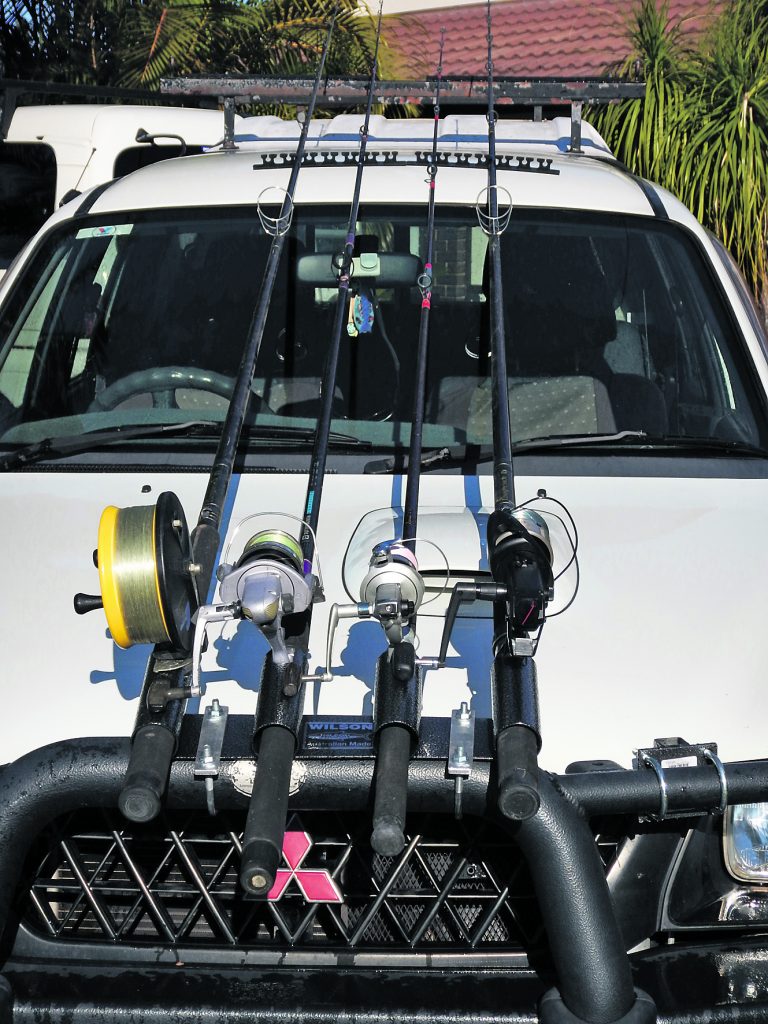
NOT LEGAL: You don’t need to be Einstein to figure out that having your bullbar rod holders on the right hand (driver’s side) of the vehicle is not a wise choice. This will greatly decrease your vision of the road, which could lead to an accident. As such, it is illegal to have rods in a position that obstructs your view of the road.
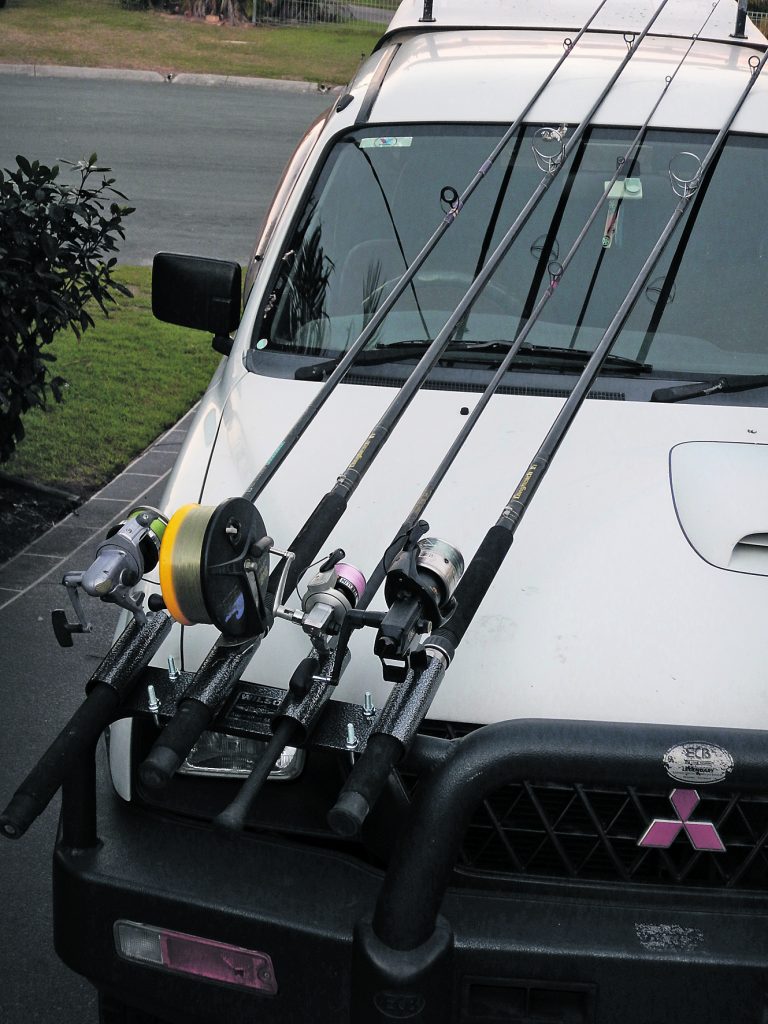
NOT LEGAL WITH MANY BULLBARS: Having your rods positioned on the left hand side of your vehicle is the only legal position to carry them. However, with most bullbars not being square in relation to the length of the vehicle this poses further problems as the rods are now facing across the middle of the vehicle and almost across the drivers vision. Additionally, the tips of long rods may actually extend past the cabin on the driver’s side (which is illegal) and will also heighten chances of your rods being damaged. This fixed type of rod holder can only work if the left (passenger) side of the bullbar is square in relation to the length of the vehicle so that the rods go straight up over the left hand side of the vehicle.

LEGAL: L Wilson and Co have recently solved anglers’ problems with the Removable Turntable Rod Holder. Basically, the rod holder portion of the assembly can be set at any position no matter what angle the left hand side of your bullbar is. The rod holder can bet set correctly so that the rods run straight over the left hand side of the vehicle. This makes them legal as they do not obstruct the driver’s vision of the road. Note that there are only four pods for rods. Bullbar rod holders must be ‘designed’ to carry no more than four rods or they are illegal, even if you do not use all the rod holders. Only having four rods in a six pod holder is still illegal. Also this does not mean you can have three four-pod sets stacked on top of each other to transport twelve rods. One four-pod rod holder carrying a maximum of four rods is all that is allowed.
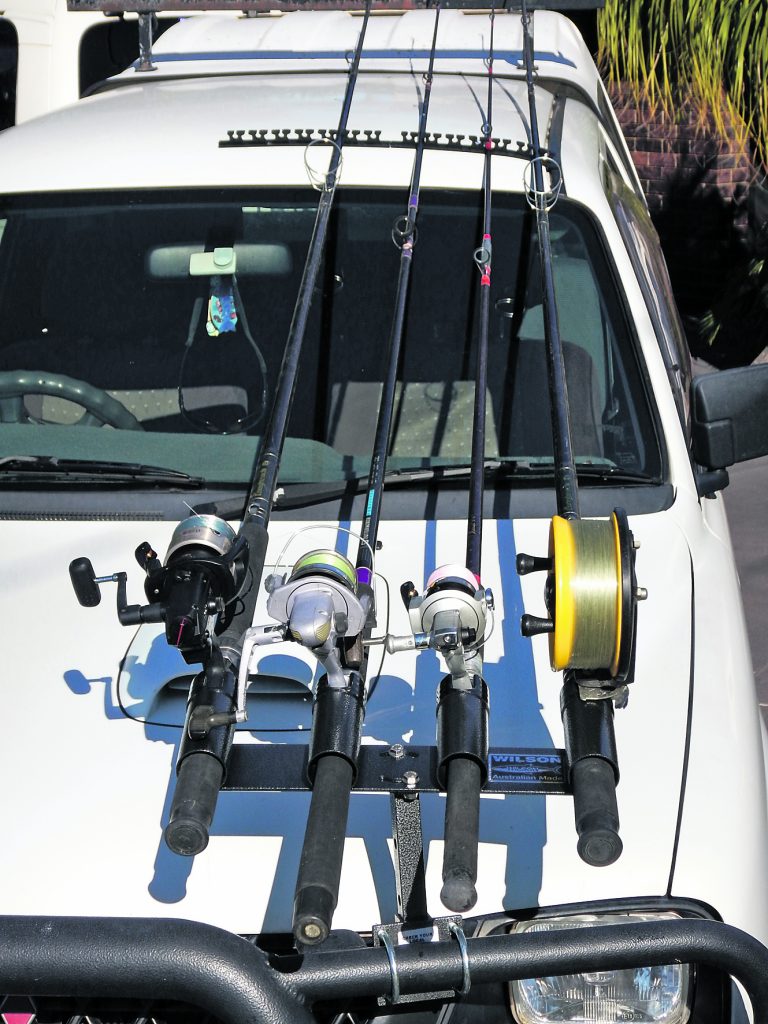
NOT LEGAL: However, even in this position, your rods cannot obstruct your driving lights or extend forward past the front profile of the bullbar where they could possibly cause injury to someone while the vehicle is underway or parked. Putting a turntable rod holder at a higher position will probably solve the driving lights issue but you will still need to ensure that the rod butts do not protrude too far forward.
NOT LEGAL: Bullbar rod holders cannot be left on the vehicle when not in use if they protrude forward of the bullbar. You can turn a standard model around so it is behind the front profile of the bullbar when not in use and this is legal providing it does not protrude above and bullbar either. Note the plastic pod inserts on this model, which helps to protect the reel stems and winch fittings on your rods. These can also now be purchased separately.
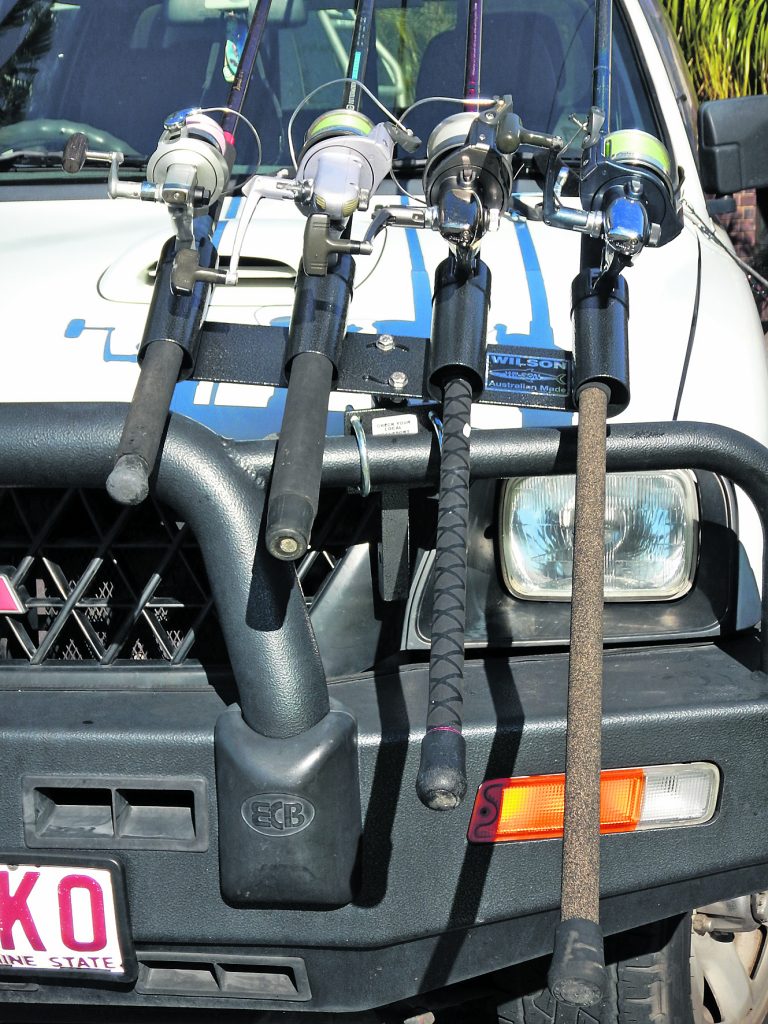
LEGAL: Some rod holders, such as this one are designed to be easily removed. The locking pin is removed and the stem of the rod holder is slid out of the bracket and then stored away. All that is left is the mounting bracket, which is behind the front profile of the bullbar and not protruding above it, which makes it legal. Additionally, this is much quicker and easier than having to get a spanner to remove the U-bolts, as is the case with conventionally mounted bullbar rod holders.
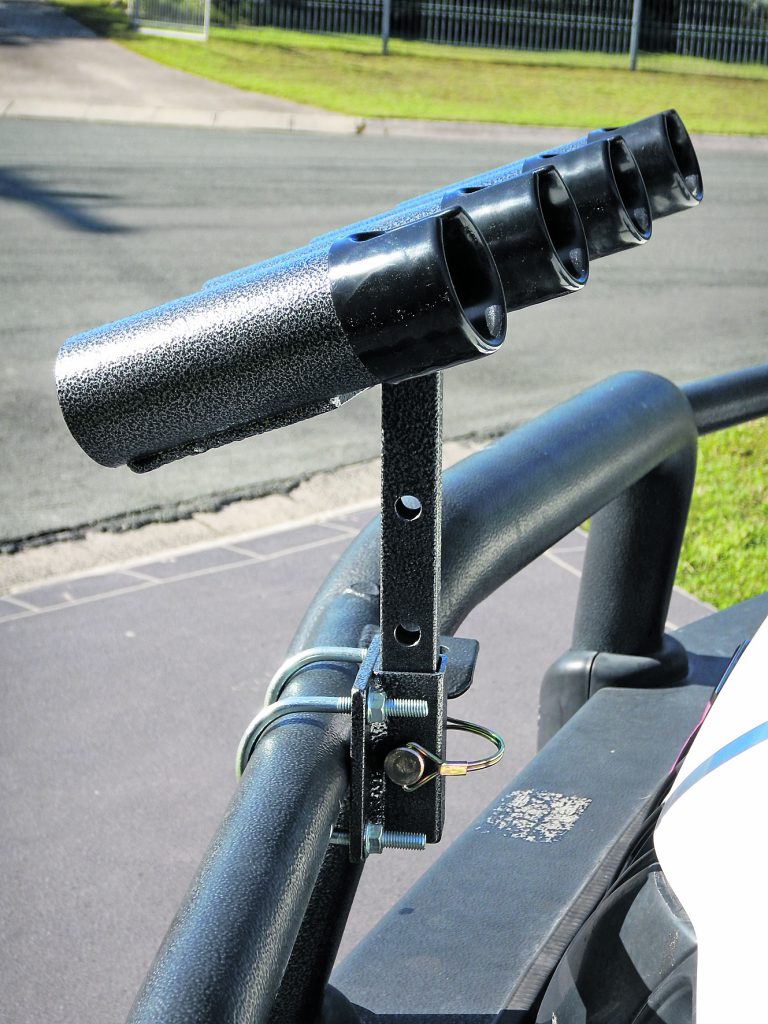
Your rods also need to be secured so there is no chance that they come dislodged during transit or if you were to brake suddenly. A stretchable strap can secure them into the rod holder and/or the tips secured to a carriage bar or other point on the roof of the vehicle. Even a piece of light rope tied to the tips and tensioned slightly to a rear point on the car will stop them wobbling excessively and getting damaged. It is your responsibility to ensure that your rods will not come adrift during transit. Additionally, you want to take care of your rods as you don’t want to arrive at your fishing destination and find that one or more of your rods is now damaged and cannot be used.
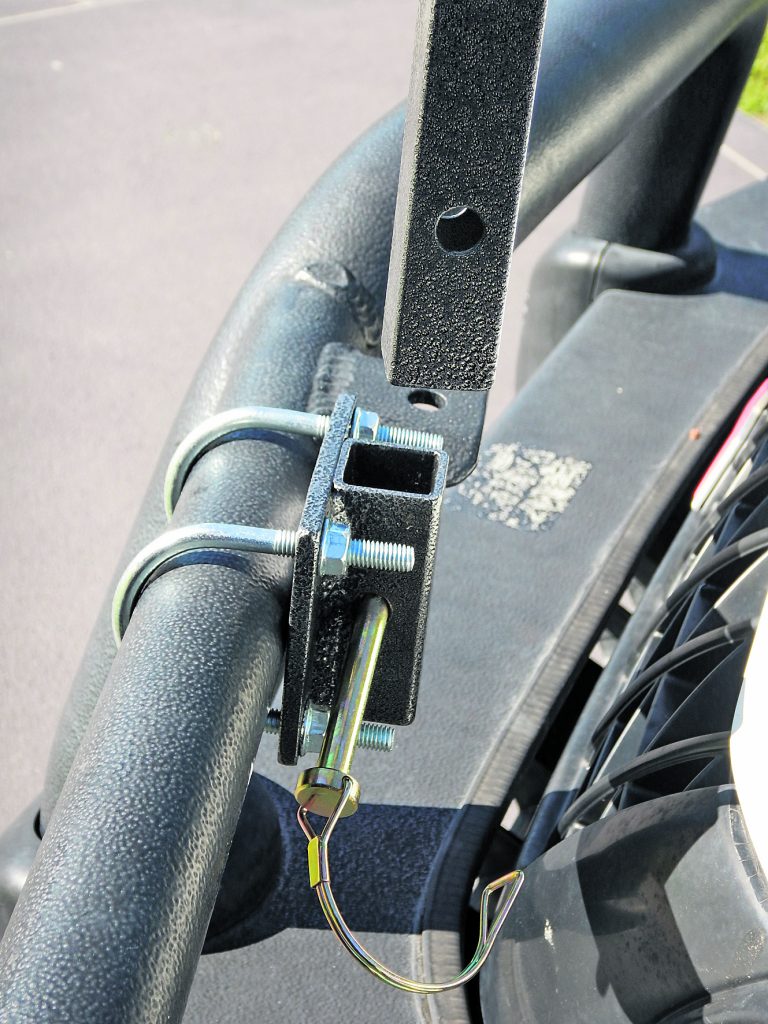
The tackle on your rods needs to be secured so that it doesn’t come loose where it can fly around and damage someone. A large sinker could easily smash a windscreen, dent your vehicle or damage the blank of a rod if it came free. My advice would be to unrig all your rods before highway transit. When on the beach, make sure your line is tensioned and use a Velcro strap (such as a rod wrap) to secure your sinkers or lures against the blank to stop them bouncing around.
